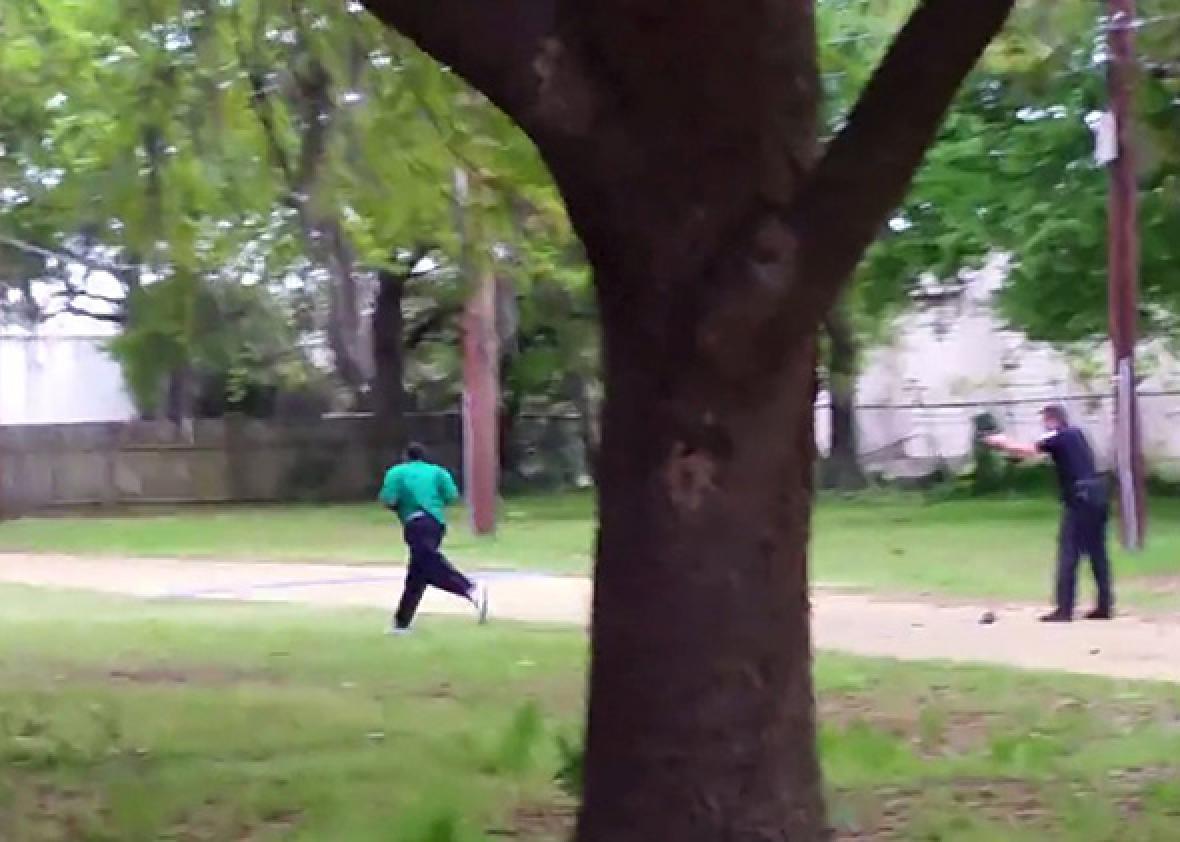
Handout via Reuters
The trial of ex-police officer Michael Slager, who fatally shot unarmed 50-year-old Walter Scott after pulling him over for a broken taillight on April 4, 2015, has ended with a hung jury, forcing the judge who presided over the case for the past month to declare a mistrial.
The outcome leaves prosecutors with the option of putting Slager on trial a second time, with a new jury, and hoping for a different result. According to a press release from the office of Ninth Judicial Circuit Solicitor Scarlett A. Wilson, they will take that bet, and are committed to trying Slager again.
A bystander with a cell phone camera caught Slager firing his gun at Scott eight times as Scott ran from him. The release of the videotape swiftly led to Slager being charged with murder. The fact that the seemingly open-and-shut case against Slager has, for now, ended in a mistrial provides new evidence that the criminal justice system is simply not set up to deliver justice to victims of police misconduct.
Slager’s non-conviction marks at least the third trial in recent memory in which a white police officer charged with killing an unarmed black civilian ended in a hung jury. One of the others took place last month in Cincinnati, Ohio, and centered on the death of Sam Dubose; the second, involving the death of Jonathan Ferrell, happened last year in Charlotte, North Carolina. Last December, in Baltimore, Maryland, the trial of one of the six officers charged in the death of Freddie Gray ended in a mistrial as well.
The jurors tasked with reaching a verdict in the Walter Scott case had three options before them: find Slager guilty of murder, find him guilty of voluntary manslaughter, or acquit him of both. It’s not clear at this point how many of the 12 jurors voted to convict and how many voted to acquit, though an unusual letter written to the judge by one of the jurors on Friday suggested that he or she was the lone holdout arguing for acquittal. That letter prompted Judge Clifton Newman to float the possibility of a mistrial, but at the last second the jury foreman indicated that a unanimous verdict might still be possible if the jury was allowed to continue deliberating. Judge Newman encouraged them to do so, shortly before adjourning court for the weekend.
On Monday morning, the jury submitted a note to the judge asking a set of questions about the law, and reporting that, for the time being, the “majority” of the jurors were “still undecided.” It was not immediately clear whether that meant some of the jurors who appeared to be supportive of a conviction on Friday had changed their minds, or whether earlier reports of an 11-1 split had been incorrect. Several hours after sending the note, the jury informed the court that they still could not reach a unanimous verdict, moving Newman to declare a mistrial.
Slager’s legal defense, as presented to the jury over the past several weeks, was that he had acted in self-defense, and had fired at Scott because Scott had put him in fear for his life by stealing his stun gun from him during a struggle. That claim of self-defense—which would have required the jury to decide Slager had “no other probable way to avoid the danger of death or serious bodily injury”—seemed like it couldn’t possibly fly given that Scott could clearly be seen on the video tape running away from Slager when the officer shot him. And yet, for at least one person on the jury, it did, and that was enough to prevent Slager from being convicted.